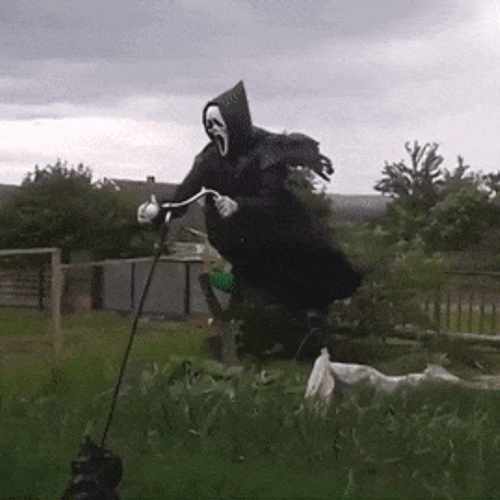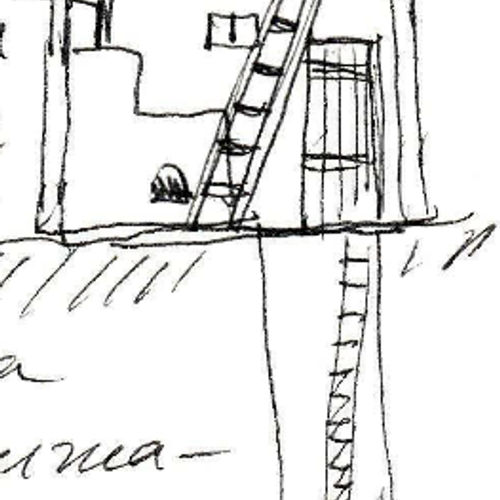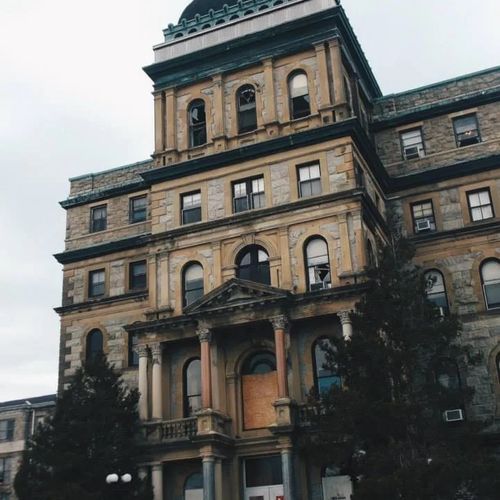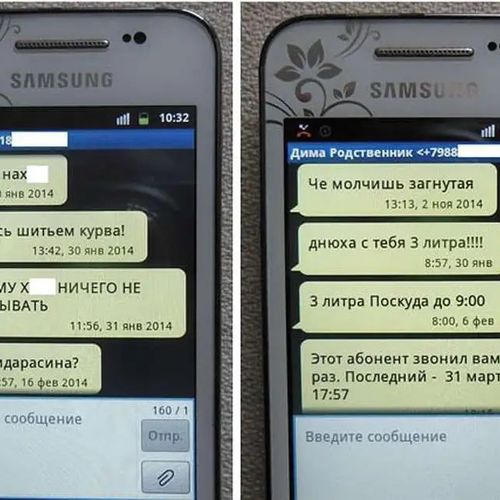| ID | #1491297183 |
| Añadido | Mar, 04/04/2017 |
| Autor | July N. |
| Fuentes | |
| Fenómenos | |
| Estado | Hipótesis
|
Datos iniciales
Una familia de Columbus (Ohio) fue atacada por un Poltergeist. El sábado por la mañana de marzo de 1984, todas las luces de la casa de la familia se encendieron repentinamente, a pesar de que nadie tocó el interruptor. John y Joan sugirieron que el incidente fue causado por una sobretensión, por lo que llamaron a un electricista de la compañía de servicios públicos. El electricista intentó durante mucho tiempo que las bombillas se apagaran, pero se rindió, incapaz de explicar lo que estaba sucediendo.
Por la noche, comenzaron a suceder cosas más extrañas: lámparas, candelabros de cobre y relojes comenzaron a volar por el aire; copas de vino se rompieron; la Ducha comenzó a funcionar por sí sola; un huevo que se levantaba de la Caja por sí mismo se estrelló contra el techo; cuchillos volaron desde los cajones, etc. Alrededor de la medianoche del sábado, la policía de Columbus fue llamada a la casa, pero no había nada que pudieran hacer. Un respiro de los acontecimientos extraños llegó el domingo, cuando tina salió de la casa a la iglesia, y luego de nuevo por la tarde, cuando fue a visitar a un amigo. El domingo por la noche, tres ancianos de la Iglesia mormona fueron llamados por familiares. Intentaron con el poder de la oración disipar la fuerza que había creado el caos en la casa. Desafortunadamente, no funcionó. Todos los eventos fueron vistos literalmente por docenas de testigos confiables, incluidos periodistas, oficiales de policía, representantes de la iglesia y vecinos.
Durante la entrevista, el fotógrafo tomó una foto del vuelo del Teléfono. La foto fue publicada en el periódico al día siguiente. La publicación de la foto causó furor. Camarógrafos de televisión y reporteros de periódicos de todo el país acudieron a la casa de Resha, todos con la esperanza de presenciar alguna otra manifestación de lo sobrenatural. Los informes del periódico también llamaron la atención del parapsicólogo William Roll, quien voló a Columbus para ver los eventos místicos por sí mismo.
Mientras estaba allí, la pintura voló desde la pared frente a él y su propia grabadora voló un poco más de dos metros.
Los escépticos no estaban tan seguros del componente místico, por lo que se deshicieron de las fotos resultantes tomadas por el fotógrafo el lunes por la mañana. En una de las fotos, las manos de Tina eran claramente capaces de manipular el cable del Teléfono y la base.Pronto apareció otra evidencia. Durante una larga visita de periodistas de televisión, una cámara que accidentalmente se dejó encendida grabó a una chica agarrando una lámpara de mesa por un cable y haciendo tirones. Al mismo tiempo, ella gritó de horror.
Más tarde, cuando se le mostró la grabación, tina admitió que había manipulado algunas de las apariciones posteriores. Ella explicó que estaba harta de largas entrevistas y atención constante. Ella esperaba que la Prensa se fuera tan pronto como recibieran su historia.
Se cree que los problemas emocionales pueden causar actividad similar a Poltergeist. ¿Qué pasó con tina después de que las cámaras de televisión y los reporteros se fueron? Según un informe de 1993, tina (en ese momento tenía 23 años) estaba en espera de juicio en Georgia por el asesinato de su hija de tres años. El niño fue golpeado severamente y murió de lesiones en la cabeza. Que el resultado del juicio y el futuro destino de Tina son desconocidos.
__________________________________
Tina Resh es la hija adoptiva de Joan y John Resh, quienes la maltrataron físicamente. Los rechi eran bien conocidos en Columbus, ya que eran padres adoptivos que ayudaron a cuidar a 250 niños hasta 1984.
Cuando tenía 14 años, tina vio la película Poltergeist, y poco después, la familia informó haber visto objetos volando alrededor de su casa. Se le pidió al reportero Mike Harden de the Columbus Dispatch que ayudara a la familia, y atrajo al fotógrafo Fred Shannon. Columbus Dispatch entrevistó a Tina y más tarde publicó algunas fotos que supuestamente mostraban un Teléfono volando por el aire.
El parapsicólogo William Roll se quedó en la casa de Resh para investigar el caso y declaró que hubo una verdadera "psicoquinesis espontánea". Roll, sin embargo, nunca observó que ningún objeto se moviera por sí solo. En un caso, una pintura cayó de una pared en una habitación de arriba donde tina estaba sola media hora antes; Roll estaba mirando hacia un lado de la pintura cuando cayó. A James Randi, un investigador del Comité de investigación científica de las denuncias de fenómenos paranormales,se le negó el acceso a la casa, pero investigó el caso y sospechó que tina había orquestado supuestos casos de Poltergeist.
Según Terence Hines:
El Poltergeist de Resha resultó ser tan esquivo que nadie había visto que un solo objeto comenzara a moverse por sí solo. Incluido un fotógrafo de periódicos que descubrió que si observaba un objeto, se negaba obstinadamente a moverse. Así que sostuvo la cámara y apartó la vista... Una de las fotos obtenidas de esta manera fue distribuida por Associated Press y ampliamente promocionada como una prueba de la realidad del fenómeno. Cuando se examinó de cerca, la evidencia fotográfica en este caso mostró de manera concluyente que tina estaba fingiendo los eventos simplemente dejando caer el Teléfono y otros objetos "voladores" cuando nadie estaba mirando. El análisis cuidadoso de Randy de otras fotos de Tina y su Teléfono volador, muchas de las cuales no se han publicado, respalda la conclusión de que ella estaba fingiendo. El Editor de Columbus Dispatch, Luke Feck, avergonzado por la revelación de que él y su periódico habían sido engañados por una falsificación tan obvia, le negó a Randy permiso para imprimir las fotos que le había dado anteriormente, en un aparente intento de ocultar la evidencia del engaño de Tina y la credulidad del periódico. ."
En un incidente posterior , un grupo de televisión que llegó inadvertidamente dejó una cámara de video encendida, que capturó imágenes de tina inclinando deliberadamente una lámpara de mesa y luego gritando como si estuviera asustada, un evento que anteriormente se atribuyó a Poltergeist. Frente a la grabación de video, tina dijo que lo hizo para que los reporteros se fueran.
Noticias originales
In 1984, a Columbus, Ohio family was plagued by another case of poltergeist phenomena and in spite the claims of skeptics, many researchers believe this was a classic case of genuine activity... at least for a time.
John and Joan Resch first attracted publicity in late 1983 when a reporter from a local newspaper, the Columbus Dispatch, came to their home to chronicle the couple’s extraordinary work with foster children. Over the years, the couple had taken in more than 250 homeless and disturbed children. At the time the article was written, the family consisted of John and Joan, their son, Craig, their adopted daughter, Tina, and four foster children.
Five months later, the Resch family would be in the news again. Apparently, their 14-year old daughter Tina had become the focus for a strange and very frightening series of events. On a Saturday morning in March 1984, all of the lights in the Resch home suddenly went on all at once, even though no one had touched a switch. John and Joan assumed the incident had been triggered by a power surge and they telephone the local utility company. It was suggested that they call an electrician, which they did. An electrical contractor named Bruce Claggett came to the house, thinking that it was merely a problem with a circuit breaker. He was unable to keep the lights from turninff on. Claggett even tried taping the light switches so that they stayed on. Closet lights which operated with a pull string would be turned out, but seconds later, the bulbs would be glowing again. Claggett finally gave up, unable to explain what was going on.
By evening, stranger things were being reported like lamps, brass candlesticks and clocks flying through the air; wine glasses shattering; the shower running on its own; and eggs, rising out of the carton by themselves and then smashing against the ceiling; knives were flying from drawers; and more. A rattling wall picture was placed behind the couch, only to slide back out again three different times.
As the weekend wore on, a pattern began to develop. The intensity and focus of the activity seemed to be Tina, who was even struck by a number of the objects. A chair was seen tumbling across the floor in Tina’s direction and it was only stopped from hitting her because it became wedged in a doorway. The fact that Tina was the object of the activity is important. Family members, neighbors and unrelated witnesses actually saw Tina being hit and smacked by flying objects, which came from parts of the room where she was not located!
Near midnight on Saturday, the Columbus police were summoned to the house but there was nothing they could do. The only respite from the strange events came on Sunday, when Tina left the house for church and then again in the afternoon when she went out to visit a friend. On Sunday evening, three elders from the Mormon Church had been summoned by a relative and, laying their hands on Tina’s head, attempted a prayer blessing to dispel the force which was creating havoc in the house. Unfortunately, it didn’t work.
By Monday morning, the house was a wreck and literally dozens of reliable witnesses, including reporters, police officers, church officials and neighbors, had reported unexplained phenomena in the Resch home.
During an interview, a photographer snapped a photo of the telephone in action and was printed in the newspaper the following day. The publication of the photograph touched off a media furor. Television crews and newspaper reporters from across the country descended on the Resch home, all hoping to witness some other manifestation of the supernatural. The newspaper reports also gained the attention of parapsychologist William Roll, who flew to Columbus to see the events first-hand.
While he was there, a picture flew from the wall in front of him and his own tape recorder flew over seven feet under its own power. Roll was convinced that RSPK was at work.
Skeptics weren’t so sure and wisely began investigating the other photographs on the roll of film shot by the photographer on Monday morning. In one of the photos, Tina’s hands had clearly been in a position to have manipulated the telephone cord and base. Soon, there was other damning evidence as well. During an extended visit by television reporters, a camera that had accidentally been left running recorded the girl grasping a table lamp by its cord and jerking out toward her. At the same time, she let out a cry of horror.
When confronted, Tina admitted that she had faked some of the later phenomena. She explained that she had been bored by the lengthy interviews and irritated by the constant attention. She hoped that the press would leave once they got their story. For the skeptics, the film and the confession were proof positive that the poltergeist had been Tina all along.
Yet not everyone shared that view, including the majority of the supposedly skeptical journalists. Many of them remained sure they had witnessed genuine, unexplained activity. They also pointed out that the skeptics had conveniently forgotten (and isn’t that normally the case?) about the scores of witnesses who would swear that activity had been directed toward Tina, not originating from her. William Roll, a trained scientist and observer, was also convinced of phenomena that he witnessed. He conceded that he had not been observing Tina under "controlled conditions", but continued to assert that Tina seemed to have demonstrated authentic RSPK.
What caused the manifestations? Researchers believed that it was a case of repressed anger and anxiety seeking release. Apparently, there had been recent problems at home over the fact that Tina, against the wishes of John and Joan, had recently been searching for her natural parents. Also, Tina’s best friend of two years had ended their friendship just two days before the events began. All of this apparently combined to create an outward transference of energy. How exactly? We may never know.
For those who question whether or not, emotional problems can cause poltergeist-like activity to take place should look at what happened to Tina after the TV cameras and reporters went away. According to a 1993 report, Tina, then 23-years old, was awaiting trial in Georgia for the murder of her three-year old daughter. The child had been badly beaten and had died from injuries to the head. What the outcome of the trial was, and whatever became of Tina is unknown.
______________________
Tina Resch is the adopted daughter of Joan and John Resch, who were physically abusive to her.[7][8] The Resches were well known in Columbus, as they were foster parents who had helped care for 250 children prior to 1984.[9] When she was 14, Tina watched the movie Poltergeist, and shortly afterward the family reported seeing objects fly around their house.[10] Reporter Mike Harden of The Columbus Dispatch was asked to assist the family, and involved photographer Fred Shannon.[9] The Columbus Dispatch interviewed Tina, and later published several photos purporting to show a telephone flying through the air.[2]
Parapsychologist William Roll stayed in the Resch house to investigate the case, and claimed that there had been genuine "spontaneous psychokinesis".[11] Roll, however, never observed any object move by itself. In one incident, a picture fell from a wall in an upstairs room where Tina had been alone half an hour before; Roll was facing away from the picture when it fell.[8][11] James Randi, an investigator for the Committee for the Scientific Investigation of Claims of the Paranormal was refused access to the household,[12] but investigated the case and suspected Tina had faked the alleged poltergeist occurrences.[13] According to Terence Hines:
The Resch poltergeist turned out to be so elusive that no one ever actually saw a single object even start to move of its own accord. This included the newspaper photographer, who found that if he watched an object, it stubbornly refused to budge. So he would hold up his camera and look away... One of the photos obtained in this way was distributed by the Associated Press and touted widely as proof of the reality of the phenomenon. Examined closely, the photographic evidence in this case strongly suggested that Tina was faking the occurrences by simply throwing the phone and other "flying" objects when no one was looking. Randi's careful analysis of the other photos, many unpublished, of Tina and her flying phone strengthen the conclusion that she was faking. The editor of The Columbus Dispatch, Luke Feck, embarrassed by the revelation that he and his paper were taken in by so obvious a fake, refused Randi permission to print the photos he had given him earlier, in an apparent attempt to suppress the evidence of Tina's trickery and the newspaper's credulity."[2]
In a later incident, a visiting television crew inadvertently left a video camera on, which caught footage of Tina deliberately knocking over a table lamp, then screaming as if in fright, an event that had previously been ascribed to the poltergeist. When confronted with the videotape, Tina claimed she had done it to get the reporters to leave.[11][14] Randi characterized the situation as a hoax by an adolescent girl seeking attention, saying, "examination of available material indicates that fraudulent means or perfectly explainable methods have been employed to provide the media with sensational details about an otherwise trivial matter."[15] Randi examined a roll of photos taken by press photographers and said that they showed the girl's foot hooked beneath a sofa that had purportedly moved by itself, and that the glass in a picture frame that allegedly shattered on its own while in her hands was already broken before she ever picked it up.[16] His conclusion of the case, as he reported in Skeptical Inquirer, Spring 1985, was as follows:
The evidence for the validity of poltergeist claims in this case is anecdotal and thin, at best. The evidence against them is, in my estimation, strong and convincing.[13]
Hipótesis
Falsificación deliberada

Esta versión incluye cualquier falsificación que imite fenómenos inexplicables como desde el exterior: bromas, flashmobs, noticias falsas, engaño de testigos, escenificaciones, etc.
Hay muchas maneras de hacer algo similar a un fantasma o un platillo volador con materiales improvisados, sin usar videos y fotomontajes.
Muchas cosas caseras hechas para una broma, una broma o una imitación directa de un ser o evento místico pueden confundirse con algo inexplicable no solo en fotos y videos, sino también en la realidad.
Investigación
Currículum
Hechos similares
Inicie sesión o regístrese para comentar






